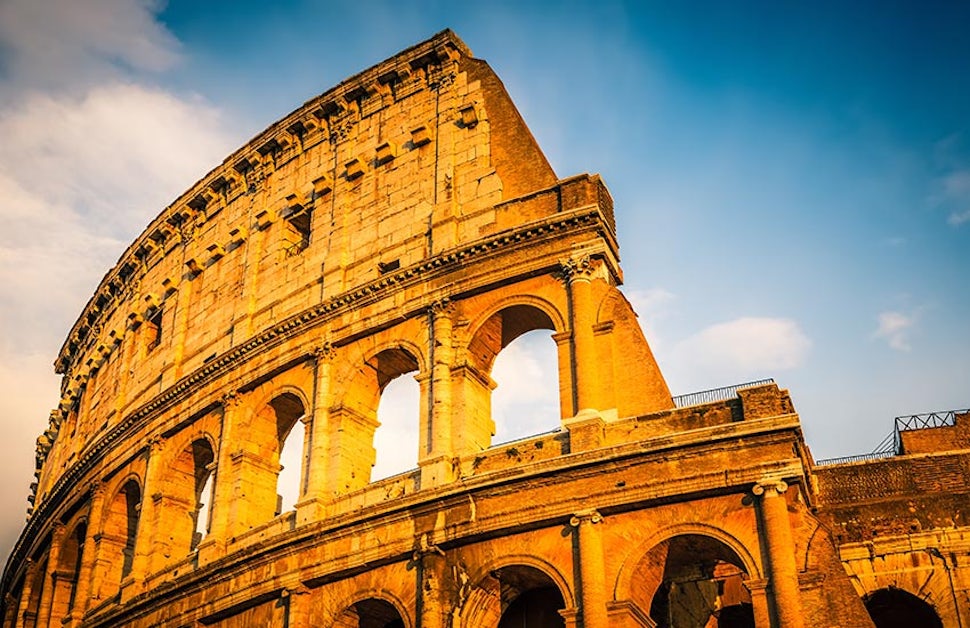Why Visit the Colosseum in Rome
The most magnificent of Roman monuments, the Colosseum.

With the wheels of your flight touching down at Rome’s Fiumicino Airport its time to start thinking about what you’re going to do on your visit. Rome is a beautiful city. A city of ruins, art, culture, and history. It is brimming with places to eat and things to see. So much in fact, that you could spend a lifetime exploring the narrow tangle of the city’s streets, the beautiful squares and all the restaurants, cafes, bars, museums and galleries. Unfortunately, when on holiday we are restricted by time and have to prioritize where, when and what we are going to see and do. While everyone will undoubtedly have their own itinerary, and rightly so, everyone’s should, without fail, include a trip to that most magnificent of Roman monuments, the Colosseum.
What is the Colosseum
For some, this may seem like a reductive statement but stated plainly, the Colosseum is Rome. Like Big Ben is London, the Opera House, Sydney, the Eiffel Tower, Paris and the Statue of Liberty, New York. It is fact that no structure in all of Rome is more representative of the city. Large and steeped in history it points to the former glory of an empire long gone by and the role it has played in developing the modern city that exists today. So, once again with feeling, the Colosseum is Rome.
History
Commissioned by Emperor Vespasian of the Flavian dynasty, the mammoth Colosseum is located at the far eastern end of the Roman Forum. The structure was built as an amphitheater to serve as a performative space where violently bloody gladiatorial contests and massive spectacles could be staged. When in 80 AD the Colosseum was completed and opened by Emperor Titus, the son of Vespasian, who had died the year previous, its unveiling was marked with 100 straight days of games.
Over the course of its existence, Romans would flock from all across the empire to watch the muscular, violent displays of Gladiators who fought against each other, slaves, prisoners and wild animals imported from Africa. Dramatic reenactments of glorious Roman victories were also popular, and a famous performance saw the entire Colosseum flooded to recreate a sea battle.
However, now sections have been restored, and what remains today is still staggeringly impressive. It is an iconic symbol for an iconic city.
A Word of Advice
Before you go to the Colosseum, a word of advice. The Colosseum is one of Rome’s most visited attractions. In peak months crowds here can be enormous. And, in the height of summer, with the Italian sun beating down, waiting in line for tickets, sometimes for as long as two hours, can be a real bummer. To avoid this, look to buy tickets online. This will save you tons of times. Better still, is that many agencies and tour operators offer tickets with fast track or skip the line options. These mean you can turn up and pretty much go straight in, saving you even more time.
Get the most out of your Visit
A basic ticket will gain you access to the Colosseum and access to the Arena floor, but that’s not all the place has to offer. And, while this is still a great option and a fantastic experience, why miss out on seeing more?
Other tour tickets will give you access to the Hypogeum and the newly renovated top tier of the Colosseum. The Hypogeum is a fantastic insight into the inner workings of the Colosseum as this was the underground labyrinth of corridors and cells where, slaves, prisoners, and animals were kept before games. On the top tier, you can enjoy phenomenal views over all of Rome and get a true sense of the Colosseum’s scale.
For a truly special visit consider heading to the Colosseum at night. Various tour operators offer intimate tour experiences of the Colosseum, including the underground Hypogeum, under cover of darkness. It is quite something to see the mammoth structure backlit and bathed in moonlight.
We want to acknowledge and thank the past, present, and future generations of all Native Nations and Indigenous Peoples whose ancestral lands we travel, explore, and play on. Always practice Leave No Trace ethics on your adventures and follow local regulations. Please explore responsibly!
Do you love the outdoors?
Yep, us too. That's why we send you the best local adventures, stories, and expert advice, right to your inbox.










